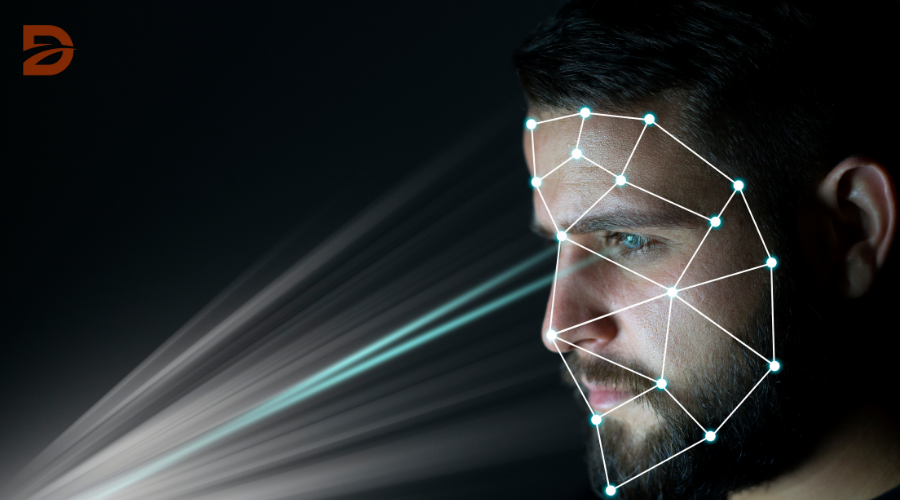The lives lost in traffic accidents every 24 seconds, according to the World Health Organization, serve as a sobering reminder of the pressing need for enhanced road safety. In response to this global challenge, automakers and technology innovators have developed advanced in-car health monitoring systems that utilize cutting-edge sensors, cameras, and artificial intelligence to continuously track driver alertness and well-being. These systems play a pivotal role in detecting and preventing potential safety risks, such as driver fatigue or distraction, ultimately enhancing the overall safety of drivers, passengers, and other road users.
Key Takeaways
- In-car health monitoring systems employ a range of technologies, including facial recognition, eye tracking, and physiological monitoring, to assess driver alertness and well-being in real-time.
- These systems are designed to detect and alert drivers to signs of fatigue, distraction, or impairment, enabling proactive interventions to prevent accidents.
- Integrating driver monitoring systems with Advanced Driver Assistance Systems (ADAS) is a key step towards achieving higher levels of driving automation and enhanced road safety.
- Visual, auditory, and haptic alerts, as well as active control mechanisms, are used to keep drivers engaged and enable safe vehicle responses in critical situations.
- The development of in-car health monitoring systems is a global trend, with legislation and industry standards driving their widespread adoption to improve overall transportation safety.
Driver Fatigue Detection, In-Car Health: Enhancing Road Safety
Driver monitoring systems (DMS) are the key technology behind in-car health monitoring, designed to enhance road safety by closely tracking the driver’s behavior and state. These advanced systems utilize facial recognition software and eye-tracking technology to continuously analyze the driver’s facial expressions, head position, and eye movements, detecting early signs of drowsiness or distraction.
Driver Monitoring Systems: Keeping an Eye on Alertness
By providing real-time data on the driver’s alertness, DMS can issue timely alerts to the driver, helping them maintain focus and avoid dangerous driving situations. Recent research has shown that drowsy-driving crashes often occur between midnight and 6 a.m. or in the late afternoon, and frequently involve a single vehicle running off the road at high speed with no evidence of braking.
Real-Time Monitoring for Drowsiness and Distractions
To combat this, driver monitoring systems employ advanced sensors and algorithms to detect the early signs of drowsiness, such as prolonged eye closure, head nodding, and yawning. These systems can also identify driver distraction, monitoring the driver’s gaze and head position to ensure their attention remains on the road. By proactively alerting the driver, DMS can help prevent fatigue-related accidents and keep drivers safe on the journey.
According to the National Highway Traffic Safety Administration, there were an estimated 91,000 police-reported crashes involving drowsy drivers in 2017, leading to about 50,000 injuries and nearly 800 deaths. Integrating driver monitoring systems into vehicles is a crucial step in reducing these tragic incidents and enhancing overall road safety.
Advanced Sensors and AI: Detecting the Undetectable
In-car health monitoring systems are at the forefront of cutting-edge automotive technology, leveraging a diverse array of sensors and artificial intelligence (AI) algorithms to detect even the most subtle signs of driver impairment or distraction. These advanced systems go beyond traditional vehicle-based monitoring, delving deep into the driver’s physiological and behavioral cues to ensure the utmost safety on the road.
Facial Recognition and Eye Tracking for Attentiveness
Facial recognition and eye-tracking technologies are the backbone of these driver monitoring systems. By continuously scanning the driver’s face and eyes, these systems can analyze factors like blink rate, gaze direction, and micro-expressions, which can indicate fatigue or lack of attention. This real-time assessment of the driver’s attentiveness is crucial in identifying potential safety risks before they escalate.
Physiological Monitoring: Heart Rate, Blink Rate, and More
Advanced in-car health monitoring systems go beyond just facial and eye tracking, incorporating physiological monitoring to provide a more comprehensive assessment of the driver’s overall health and alertness. By tracking parameters such as heart rate and breathing patterns, these systems can detect subtle changes that may signal fatigue, stress, or other impairments. Blink rate, for instance, is a reliable indicator of drowsiness, and AI algorithms are used to analyze these biometric data in real-time.
By combining facial recognition, eye tracking, and physiological monitoring, in-car health monitoring systems can create a detailed profile of the driver’s state, empowering advanced driver assistance systems (ADAS) to intervene and maintain safety when necessary.
Integrating DMS with ADAS for Autonomous Driving
As the automotive industry progresses towards higher levels of autonomy, driver monitoring systems (DMS) are becoming an integral component of advanced driver assistance systems (ADAS). In Level 3 and Level 4 autonomous driving, where the vehicle can handle most driving tasks, DMS plays a critical role in ensuring the driver remains alert and ready to take control when necessary.
DMS: A Key Component for Level 3 and Level 4 Autonomy
By continuously monitoring the driver’s state, DMS can detect if the driver is distracted or impaired, prompting them to regain focus or even triggering the system to take over control in certain situations. This seamless transition of driving responsibilities is essential for maintaining safety in autonomous driving scenarios.
- DMS can track the driver’s eye movements, head position, and physiological parameters like heart rate and blink rate to assess their alertness and engagement.
- When the DMS detects signs of driver inattention or drowsiness, it can issue visual, auditory, or haptic alerts to prompt the driver to regain focus.
- In situations where the driver fails to respond to alerts, the DMS can automatically activate safety features like automatic braking or steering to safely guide the vehicle until the driver resumes control.
The integration of DMS with ADAS is a crucial step in realizing the full potential of autonomous driving technologies. By ensuring the driver’s continuous engagement and readiness, DMS contributes to the seamless and safe transition of control between the vehicle and the human driver, a key requirement for Level 3 and Level 4 autonomy.
“Driver monitoring systems have been effective in alerting drivers losing focus and avoiding potential accidents.”
As the automotive industry continues to push the boundaries of autonomous driving, the role of DMS in enhancing road safety and enabling higher levels of autonomy will only become more important.
Proactive Safety Measures: Alerts and Interventions
In-car health monitoring systems employ a range of proactive safety measures to keep drivers alert and engaged. These include visual driver alerts, such as dashboard icons or heads-up displays, which provide clear and immediate warnings to the driver. Auditory alerts, like distinctive warning sounds, further reinforce the need for the driver’s attention. Even haptic feedback, through the seat or steering wheel vibrations, can effectively grab the driver’s focus.
Visual, Auditory, and Haptic Alerts for Driver Awareness
These multi-modal alert systems work together to maximize driver awareness. Visual alerts grab the driver’s line of sight, auditory alerts pierce through distractions, and haptic alerts physically engage the driver’s senses. By combining these complementary alert mechanisms, in-car health monitoring systems ensure that drivers are promptly notified of any potential safety concerns or impairments.
Active Control: Slowing Down or Steering to Safety
In more severe cases, where the driver’s state poses an immediate risk, the in-car health monitoring system may take active control of the vehicle. This could involve automatically slowing the car down or even steering it to the side of the road, ensuring the safety of the driver and other road users. This proactive intervention can be a critical safeguard against accidents caused by driver fatigue, distraction, or impairment.
By integrating these alert systems and intervention capabilities, in-car health monitoring technologies play a vital role in preventing accidents and keeping drivers safe on the road. As these systems continue to advance, they will become an increasingly essential component of the modern driving experience.
Conclusion: The Future of In-Car Health Monitoring
As the automotive industry continues to evolve, in-car health monitoring systems will only become more sophisticated and advanced. With the integration of cutting-edge sensors, facial recognition, eye tracking, and biometric analysis, these systems will be able to provide an even more comprehensive assessment of the driver’s state, enabling personalized driving experiences and enhanced safety features.
As autonomous driving technologies advance, driver monitoring systems will play a crucial role in ensuring a seamless transition of control between the vehicle and the human driver, ultimately contributing to a safer and more secure driving experience for all. The future of in-car health monitoring promises a driving experience that is not only more comfortable and convenient but also more attuned to the well-being of the occupants.
With the continuous development of artificial intelligence, sensor technology, and data analytics, in-car health monitoring systems will continue to evolve, offering new possibilities for improving road safety, reducing the impact of driver fatigue and distraction, and ultimately, transforming the way we experience the journey behind the wheel.
FAQ
What is the role of in-car health monitoring systems in enhancing road safety?
In-car health monitoring systems, including driver fatigue detection technology, play a crucial role in enhancing road safety. These advanced systems utilize a combination of cameras, sensors, and artificial intelligence to continuously monitor the driver’s alertness, identifying potential safety risks such as drowsiness or distraction. By providing real-time alerts and interventions, these systems help prevent accidents caused by inattentive driving, ultimately keeping drivers and passengers safe on the road.
How do driver monitoring systems (DMS) work to enhance road safety?
Driver monitoring systems (DMS) are the key technology behind in-car health monitoring, designed to enhance road safety by closely tracking the driver’s behavior and state. These systems utilize advanced facial recognition software and eye-tracking technology to continuously analyze the driver’s facial expressions, head position, and eye movements, detecting early signs of drowsiness or distraction. By providing real-time data on the driver’s alertness, DMS can issue timely alerts to the driver, helping them maintain focus and avoid dangerous driving situations.
What types of sensors and technologies are used in in-car health monitoring systems?
In-car health monitoring systems leverage a range of cutting-edge sensors and artificial intelligence algorithms to detect even the most subtle signs of driver impairment or distraction. Facial recognition and eye-tracking technologies are at the core of these systems, continuously scanning the driver’s face and eyes to analyze factors like blink rate, gaze direction, and micro-expressions, which can indicate fatigue or lack of attention. Some advanced systems also incorporate physiological monitoring, tracking parameters such as heart rate and breathing patterns to provide a comprehensive assessment of the driver’s overall health and alertness.
How do driver monitoring systems (DMS) integrate with autonomous driving technologies?
As the automotive industry progresses towards higher levels of autonomy, driver monitoring systems (DMS) are becoming an integral component of advanced driver assistance systems (ADAS). In Level 3 and Level 4 autonomous driving, where the vehicle can handle most driving tasks, DMS plays a critical role in ensuring the driver remains alert and ready to take control when necessary. By continuously monitoring the driver’s state, DMS can detect if the driver is distracted or impaired, prompting them to regain focus or even triggering the system to take over control in certain situations, ensuring a seamless and safe transition of driving responsibilities.
What are the proactive safety measures employed by in-car health monitoring systems?
In-car health monitoring systems employ a range of proactive safety measures to keep drivers aware and engaged. These include visual alerts, such as dashboard icons or heads-up displays, auditory alerts like distinctive warning sounds, and even haptic feedback through the seat or steering wheel vibrations. In more severe cases, the system may take active control of the vehicle, automatically slowing it down or steering it to the side of the road, ensuring the safety of the driver and other road users. By combining these alert mechanisms and intervention capabilities, in-car health monitoring systems play a vital role in preventing accidents and keeping drivers safe on the road.










